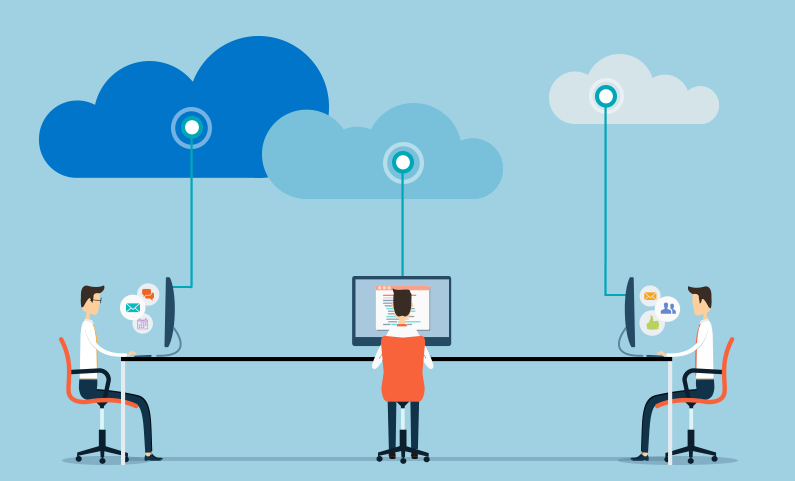A simple definition of a Document Management System
Before explaining the meaning of a Document Management System, it is important to understand the concept of Document Management. Document management is the coordination and control of the flow of electronic and paper documents. Documents can be in various forms including receipts, invoices, letters, contracts, plans, white papers, securities and bonds. The processes involve the scanning, storage, retrieval, processing, manipulation, and distribution of the documents in a secure environment. Document management also includes the ability to share documents with co-workers or other people and collaborate on them safely by applying strict access controls.
Document Management Systems are online or on-premise computer systems used to store, track, retrieve and manage electronic documents and images. Usually, a scanner is used to convert paper documents to a digital format. Very often, a mobile app is also involved to ease the process of document capture and also provide a flexible way to work on the move.
How does a Document Management System benefit your business or organisation?
Traditional and new businesses deal with a lot of paper. Although the premise to have a paperless office has been around for many years, this has not happened. Businesses and organisations still use a lot of paper and many of their processes are still paper-based including Know Your Client (KYC) procedures, receipts and invoices. Working and keeping track of those paper documents is a huge demand for people working on these businesses. Instead of allocating resources to the core activities of the business, many people waste time storing paper documents, retrieving them and finding the right information. In some cases, this waste of time can account for more than 40% of an employee’s time. The first and most important advantage of a Document Management System is that it allows businesses and organisations to save an enormous amount of time managing their paper and digital documents. This directly translates into increased productivity and having more time to perform tasks which increase the value of a business.
Functions in Document Management Systems
Full-fledged Document Management Systems will usually allow a company or organisation to perform the following:
- Document Capture – allow users to easily upload single documents or enable users to upload documents in bulk. This is usually the case when companies already have a backlog of documents and need to upload hundreds or even thousands of documents at once.
- Document Management – After uploading documents, a document management system allows users to edit existing documents, move documents between folders, delete or archive unused documents, tag documents and even allow reminders on documents. Sharing of documents inside and outside the organisation is also very important in this age of inter-connectivity.
- Document Tracking – In medium or large organisations, it is sometimes very important to make sure that documents are properly tracked. This ensures that original copies of documents are not lost and that document managers can easily track the history of each document.
- Document Archiving – Paper documents very often take a lot of space in companies and organisations. Having a proper physical archiving system backed by an archiving component in a document management system will allow a company or organisation to better and more efficiently track the archival process.
Security in Document Management Systems
Security is an inherent aspect of a document management system. Since these systems are dealing with sensitive data about the user, an organisation or a business, it is imperative that the proper levels of security are applied to the software or online platform. Security will come in many forms including:
- Restricting access to outside users – it is the most basic security measure that is implemented in a document management system, that is, provide access to documents only to those who should have access.
- Secure storage – it is very important to ensure the security of the storage facility where documents and other meta-data about these documents are stored. Having a secure and up-to-date database and the file system is of utmost importance.
Where is the information in Document Management Systems stored?
Most modern document management systems offer 2 different ways to manage and store information uploaded by users: online platforms and on-premise installations. Online platforms provide a secure environment where all your information is stored in a private cloud which can be accessed from any internet-connected device including a computer, smartphone or any mobile device. This brings an unparalleled flexibility and mobility while working with document management systems.
On-premise solutions allow businesses and organisations to have a private installation of a document management system on their own local servers limiting information to only those found on the intranet. The on-premise solution generally provides more security based on the fact that the company security protocols can be easily mapped on the document management solution. On-premise solutions, however, tend to be much more expensive than online cloud-based platforms.
Customised Document Management Systems
One of the least available features in DMS is about their customisability. Document management solutions may offer a lot of features but in some cases, companies still need some customisations to properly map a certain process or methodology. Document management systems offering customisations tend to be very attractive to these types of clients. Although there may be a cost involved in the customisation features, the end product is a solution that more clearly matches the needs and requirements of the client.
Blockchain in Document Management System
The blockchain is a new technology which has been gathering a lot of attention lately. Its trustless and unalterable nature provides a good base to which to migrate certain functions of standard document management systems to blockchain-based systems. Some of the features will include security-related enhancements that can be added to traditional document management systems including tamper proofing documents or information and provide a more secure way of accessing information based on security protocols designed and stored on the blockchain.



